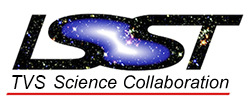Multi Wavelength Characterization (now also incorporates the gravitational Waves subgroup)
Members
Members that collaborated to generate this roadmap:
- Edo Berger - Harvard Smithsonian Center for Astrophysics
- Raffaella Margutti - Northwestern University
- Wen-fai Fong - CfA Harvard
- Derek Fox - Pennsylvania State University
- Virginia Trimble - University of California Irvine
Primary subgroup contact:
Raffaella Margutti (Northwestern University - rafmargutti@gmail.com )
Subgroup MAF engineer:
Zoheyr Doctor (Northwestern University - zdoctor@uchicago.edu)
Subgroup Primary members
- Edo Berger
- Wen-fai Fong
- Derek Fox
- Raffaella Margutti
- Virginia Trimble
Subgroup Secondary members
- Scott Anderson
- Andrew Becker
- Ashish Mahabal
- Frederic Piron
- Rob Seaman
- Tom Vestrand
- Przemek Wozniak
- Johann Cohen-Tanugi
- James Rhoads
- Peter Kurczynski
- Dave Morris
- Arne Rau
- Zoheyr Doctor
- Zoltan Haiman
- Daniel Holz
- Mansi Kasliwal
- Samaya Nissanke
- Leo Singer
- Eric Bellm
- Rolf Chini
- Laura Chomiuk
- Roger Romani
- Paula Szkody
- Marcel Agueros
- Lucianne Walkowicz
- Lucas Cieza
- Peter Brown
- Melissa Graham
- Niel Brandt
- Brad Cenko
- Suvi Gezari
- Ashley Zauderer
Roadmap Outline
We identify two major modes of operation:
Mode A: Finding counterparts (radio, X-ray, gamma-ray, neutrinos, GW) of transients discovered by LSST. LSST is in this case the discovery machine;
Mode B: LSST Follows up transients discovered elsewhere. In this case LSST is a follow-up machine;
Science drivers:
(1-B) Localizing and characterizing the electromagnetic counterparts to Gravitational Wave triggers, Neutrino events, Ultra-High Energy gamma-rays. Localizing and characterizing the optical-NIR counterparts to Fast Radio Bursts.
(2-AB) Finding Tidal Disruption Events or follow up Tidal Disruption Events found elsewhere.
(3-AB) Characterize the mass-loss of evolved massive stars with direct observations in the years before stellar death, thanks to the availability of deep pre-explosion images.
(4-B) Constrain the stellar progenitors of massive stars by using the electromagnetic signature of the Supernova shock breaking out from the star and/or the Supernova shock interaction with the companion binary star.
(5-AB) Constrain the Long and Short Gamma-ray Burst jets opening angles (and hence the true rate of these explosions) with an accurate census of the off-axis afterglow emission.
(6) Identify new classes of transients.
Major Challenge:
TIME SCALES : the phenomena we would like to constrain evolve on very different intrinsic time-scales;
DISTANCE : the average distance of LSST-discovered transients is too large for detailed radio and X-ray follow up of all transients. We will need to develop tools that will allow us to have great discerning power. Another practical challenge is represented by the limited resources for multi-wave follow-up, when compared to the number of LSST transients.
Priority goals for the subgroup:
(1) LSST ToO capability to follow up transients discovered elsewhere (like GW events, neutrino events, rapid radio transients, fast radio bursts). Ideally, the ToO capability will include the possibility to designate a desired set of filters to have color information, and thus maximize the scientific return from LSST observations.
(2) Need for non-uniform survey strategy ( i.e. deep drilling fields and rolling cadence to lower the cadence) with color information. This improved strategy would allow us, e.g., to discover SNe at a very early stage and filter out interesting targets ONLY for follow-up (i.e. nearby events for radio and X-ray follow-up or intrinsically interesting targets like SuperLuminous Supernovae).
Things to do in the next couple of years:
Next few months: Quantitatively explore the discovery power and discerning power of LSST with MAFs, using templates of known transients and variable events of the different categories. In particular, explore recovery efficiency for different kind of templates (of already known and, especially, new classes of transients). We emphasize that it is important to explore the discovery power of fading transients and transients that rise slowly and fade rapidly.
Identify collaborators: initiate collaborations with radio (especially SKA), X-ray observers/schedulers and major multi-wave facilities (even those that are just planned for the future, like THESEUS or STAR-X).
Interface with brokers to make sure the critical information will be delivered on the relevant time scale (quickly). Action item for us: Have a list of critical things that we need from the brokers.
